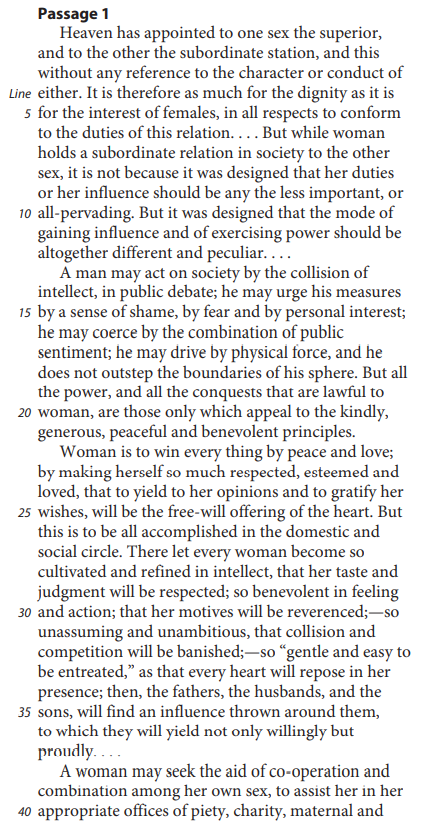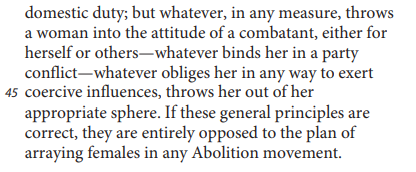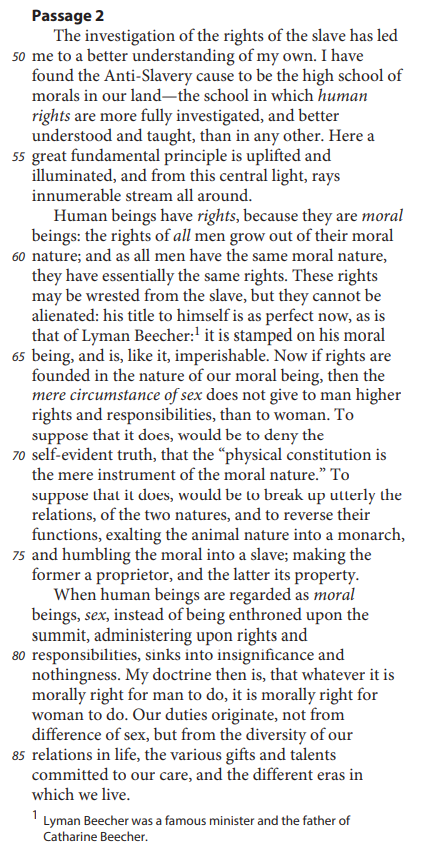SAT (Scholastic Assessment Test) is a standard test, used for taking admission to undergraduate programs of universities or colleges of the United States. SAT is developed and published by the College Board, an organization in the United States, administered by the Educational Testing Service. In this article of AKVTutorials, you will get Princeton Review SAT Prep Book Review | Practice Test 22 AMBiPi.
Princeton Review SAT Prep Book Review
Check Price On Amazon
The SAT is not a test of aptitude, it is a skill, one that can be learned like any other. The Princeton Review spend millions of dollars every year improving our methods and materials so that students are always ready for the SAT, and we’ll get you ready too, whose chapters are given as below.
Table of Contents
Part 1: Orientation
- Chapter 1: The SAT, The Princeton Review, and You
- Chapter 2: Cracking the SAT: Basic Principles
Part 2: How to Crack the Reading Test
- Chapter 3: The Reading Test: Basic Approach
- Chapter 4: More Question Types
- Chapter 5: Advanced Reading Skills
- Chapter 6: Reading Drills
Part 3: How to Crack the Writing and Language Test
- Chapter 7: Introduction to Writing and Language Strategy
- Chapter 8: Words
- Chapter 9: Questions
- Chapter 10: Punctuation
Part 4: How to Crack the Math Test
- Chapter 11: SAT Math: The Big Picture
- Chapter 12: Fun with Fundamentals
- Chapter 13: Algebra: Cracking the System
- Chapter 14: Other Algebra Strategies
- Chapter 15: Advanced Arithmetic
- Chapter 16: Functions and Graphs
- Chapter 17: Geometry
- Chapter 18: Grid-Ins
Part 5: How to Crack the Essay
- Chapter 19: Reading and Analyzing the Essay Passage
- Chapter 20: Writing the Essay
Part 6: Taking the SAT
Part 7: Practice Tests
- Practice Test 1
- Practice Test 2
- Practice Test 3
- Practice Test 4
The more you take advantage of the Princeton Review for SAT Book we’ve included in this book and the online student tools that go with it, the better you’ll do on the test. Read the book carefully and learn our strategies.
Check Price On Amazon
SAT Reading Practice Passage
Passage 1 is adapted from Catharine Beecher, Essay on Slavery and Abolitionism. Originally published in 1837. Passage 2 is adapted from Angelina E. Grimké, Letters to Catharine Beecher. Originally published in 1838. Grimké encouraged Southern women to oppose slavery publicly. Passage 1 is Beecher’s response to Grimké’s views. Passage 2 is Grimké’s response to Beecher.



SAT Reading Comprehension Practice Test Questions
SAT Practice Test 22 Question No 1
In Passage 1, Beecher makes which point about the status of women relative to that of men?
Option A: Women depend on men for their safety and security, but men are largely independent of women.
Option B: Women are inferior to men, but women play a role as significant as that played by men.
Option C: Women have fewer rights than men do, but women also have fewer responsibilities.
Option D: Women are superior to men, but tradition requires women to obey men.
SAT Practice Test 22 Answer No 1
Show/Hide Answer
Option B :
In Passage 1, Beecher makes the point that even if women in her society are perceived as being inferior to men, they are still able to effect considerable influence on that society: “But while woman holds a subordinate relation in society to the other sex, it is not because it was designed that her duties or her influence should be any the less important, or all-pervading” (lines 6-10).
Choice A is incorrect because Beecher describes the dynamic between men and women in terms of the way they can change society, not in terms of security and physical safety. Choice C is incorrect because even though Beecher implies that women have fewer rights in society than men do, she doesn’t say that women have fewer responsibilities. Choice D is incorrect because Beecher does not assert that women are superior to men.
SAT Practice Test 22 Question No 2
Which choice provides the best evidence for the answer to the previous question?
Option A: Lines 6-10 (“But… all-pervading”)
Option B: Lines 13-14 (“A man… debate”)
Option C: Lines 16-18 (“he may coerce… sphere”)
Option D: Lines 41-46 (“but whatever… sphere”)
SAT Practice Test 22 Answer No 2
Show/Hide Answer
Option A :
The previous question asks what point Beecher makes regarding the relationship between men and women in her society, with the answer being that women are considered inferior but can still have influence. This is supported in lines 6-10: “But while woman holds a subordinate relation in society to the other sex, it is not because it was designed that her duties or her influence should be any the less important, or all-pervading.”
Choices B, C, and D are incorrect because the lines cited do not support the answer to the previous question about the point Beecher makes regarding the relationship between men and women in her society. Instead, they describe ways men can affect society (choices B and C) and explain how certain actions undertaken by a woman can be viewed negatively (choice D).
SAT Practice Test 22 Question No 3
In Passage 1, Beecher implies that women’s effect on public life is largely
Option A: overlooked, because few men are interested in women’s thoughts about politics.
Option B: indirect, because women exert their influence within the home and family life.
Option C: unnecessary, because men can govern society themselves.
Option D: symbolic, because women tend to be more idealistic about politics than men are.
SAT Practice Test 22 Answer No 3
Show/Hide Answer
Option B :
In the third paragraph (lines 22-37), Beecher suggests that women can be “so much respected, esteemed and loved” by those around them that men will accede to their wishes: “then, the fathers, the husbands, and the sons will find an influence thrown around them, to which they will yield not only willingly but proudly . . . .” These lines show that Beecher believes women can influence society by influencing the men around them; in other words, women have an indirect influence on public life.
Choices A, C, and D are incorrect because lines 34-37 make it clear that Beecher believes women do affect society, even if it is an indirect effect. Beecher does not indicate that women’s effect on public life is ignored because most men are not interested (choice A), unnecessary because men do not need help governing society (choice C), or merely symbolic because women tend to be idealistic (choice D).
SAT Practice Test 22 Question No 4
As used in line 2, “station” most nearly means
Option A: region.
Option B: studio.
Option C: district.
Option D: rank.
Show/Hide Answer
Option D :
Regarding the dynamic of men and women in society, Beecher says that one sex is given “the subordinate station” while the other is given the “superior” station (lines 1-2). In the context of how one gender exists in comparison to the other, the word “station” suggests a standing or rank.
Choices A, B, and C are incorrect because, in the context of the relative standing of men and women in Beecher’s society, the word “station” suggests a standing or rank, not a physical location or area (choices A, B, and C).
SAT Practice Test 22 Question No 5
As used in line 12, “peculiar” most nearly means
Option A: eccentric.
Option B: surprising.
Option C: distinctive.
Option D: infrequent.
SAT Practice Test 22 Answer No 5
Show/Hide Answer
Option C :
When describing how men and women can influence society, Beecher says the ways they can do so “should be altogether different and peculiar” (lines 11-12). In the context of the “altogether different” ways men and women can influence society, the word “peculiar” implies being unique or distinctive.
Choices A, B, and D are incorrect because, in the context of the “altogether different” ways men and women can influence society, the word “peculiar” suggests something unique or distinctive, not something unusual and odd (choice A), unexpected (choice B), or rare (choice D).
SAT Practice Test 22 Question No 6
What is Grimké’s central claim in Passage 2?
Option A: The rights of individuals are not determined by race or gender.
Option B: Men and women must learn to work together to improve society.
Option C: Moral rights are the most important distinction between human beings and animals.
Option D: Men and women should have equal opportunities to flourish.
SAT Practice Test 22 Answer No 6
Show/Hide Answer
Option A :
In Passage 2, Grimké makes the main point that people have rights because they are human, not because of their gender or race. This is clear in lines 58-60, when Grimké states that “human beings have rights because they are moral beings: the rights of all men grow out of their moral nature” and lines 65-68, when Grimké writes, “Now if rights are founded like our moral being, then the mere circumstance of sex does not give to man higher rights and responsibilities, than to the woman.
Choices B, C, and D are incorrect because Grimké primarily emphasizes that all men and women inherently have the same rights (“rights are founded like our moral being,” lines 65-66). Her central claim is not that men and women need to work together to change society (choice B), that moral rights are the distinguishing characteristic separating humans from animals (choice C), or that there should be equal opportunities for men and women to advance and succeed.
SAT Practice Test 22 Question No 7
In Passage 2, Grimké makes which point about human rights?
Option A: They are viewed differently in various cultures around the world.
Option B: They retain their moral authority regardless of whether they are recognized by law.
Option C: They are sometimes at odds with moral responsibilities.
Option D: They have become more advanced and refined throughout history.
SAT Practice Test 22 Answer No 7
Show/Hide Answer
Option B :
In Passage 2, Grimké makes the point that human rights are not fleeting or changeable but things that remain, regardless of the circumstances, because they are tied to humans’ moral nature. She emphasizes that human rights exist even if societal laws attempt to contradict or override them, citing slavery as an example: “These rights may be wrested from the slave, but they cannot be alienated: his title to himself is as perfect now, as is that of Lyman Beecher: it is stamped on his moral being, and is, like it, imperishable” (lines 61-65).
Choices A and D are incorrect because, in Passage 2, Grimké makes the point that human rights are inherent and unchanging, not that they are viewed differently in different societies (choice A) or that they have changed and developed over time (choice D). Choice C is incorrect because Grimké doesn’t describe a clash between human rights and moral responsibilities; instead, she says that humans have rights “because they are moral beings” (lines 58-59).
SAT Practice Test 22 Question No 8
Which choice provides the best evidence for the answer to the previous question?
Option A: Lines 58-61 (“Human… same rights”)
Option B: Lines 61-65 (“These… imperishable”)
Option C: Lines 71-76 (“To suppose… property”)
Option D: Lines 77-81 (“When… nothingness”)
SAT Practice Test 22 Answer No 8
Show/Hide Answer
Option B :
The previous question asks what point Grimké makes about human rights in Passage 2, with the answer being that they exist and have moral authority whether or not they are established by societal law. This is supported in lines 61-65: “These rights may be wrested from the slave, but they cannot be alienated: his title to himself is as perfect now, as is that of Lyman Beecher: it is stamped on his moral being, and is, like it, imperishable.”
Choices A, C, and D are incorrect because the lines cited do not support the answer to the previous question about the point Grimké makes about human rights in Passage 2. Instead, they explain the source of all people’s human rights (choice A), indicate what would happen if rights were determined by gender (choice C), and discuss why gender is irrelevant to rights (choice D).
SAT Practice Test 22 Question No 9
Which choice best states the relationship between the two passages?
Option A: Passage 2 illustrates the practical difficulties of a proposal made in Passage 1.
Option B: Passage 2 takes issue with the primary argument of Passage 1.
Option C: Passage 2 provides a historical context for the perspective offered in Passage 1.
Option D: Passage 2 elaborates upon several ideas implied in Passage 1.
SAT Practice Test 22 Answer No 9
Show/Hide Answer
Option B :
In Passage 1, Beecher asserts that men and women naturally have different positions in society: “Heaven has appointed to one sex the superior and the other the subordinate station” (lines 1-2). She goes on to argue that a woman should act within her subordinate role to influence men but should not “exert coercive influences” that would put her “out of her appropriate sphere” (lines 44-46). In Passage 2, Grimké takes issue with the idea that men and women have different rights and roles. She asserts that as moral beings all people have the same inherent rights and states that “the mere circumstance of sex does not give to man higher rights and responsibilities, than to woman” (lines 66-68).
Choice A is incorrect because Passage 2 does not discuss the practical difficulties of something that is proposed in Passage 1 but rather argues against the main point of Passage 1. Choice C is incorrect because Passage 2 does not provide historical context for the view expressed in Passage 1; the passages were published at around the same time and both discuss contemporary society. Choice D is incorrect because Passage 2 does not elaborate on implications found in Passage 1 as much as it disputes the ideas explicitly expressed in Passage 1.
SAT Practice Test 22 Question No 10
Based on the passages, both authors would agree with which of the following claims?
Option A: Women have moral duties and responsibilities.
Option B: Men often work selflessly for political change.
Option C: The ethical obligations of women are often undervalued.
Option D: Political activism is as important for women as it is for men.
SAT Practice Test 22 Answer No 10
Show/Hide Answer
Option A :
While Beecher and Grimké disagree regarding a woman’s role in society, the passages suggest that both authors share the belief that women do have moral duties and responsibilities in society. In Passage 1, Beecher writes that “while woman holds a subordinate relation in society to the other sex, it is not because it was designed that her duties or her influence should be any the less important, or all-pervading” (lines 6-10). She suggests that women do have an obligation to use their influence to bring about beneficial changes in society. In Passage 2, Grimké asserts that all people “are moral beings” (lines 58-59) and that both men and women have “rights and responsibilities” (line 68). She concludes that “whatever it is morally right for a man to do, it is morally right for a woman to do” (lines 81-83).
Choice B is incorrect because neither author suggests that when men work to bring about political changes, they often do so out of consideration for others rather than considerations for themselves. Choice C is incorrect because neither passage discusses the value given to women’s ethical obligations, although both authors suggest that women do have ethical and moral obligations. Choice D is incorrect because in Passage 1 Beecher argues that women should avoid direct political activism, cautioning against actions that would put them outside their “appropriate sphere” (line 46).





